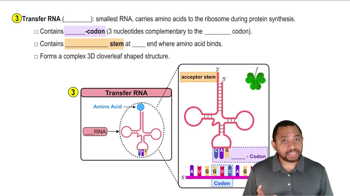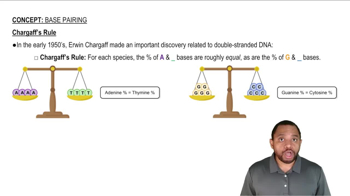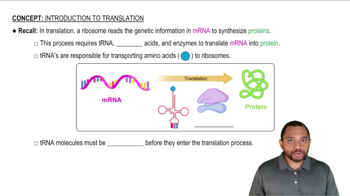Textbook Question
Rank the following in order of size: tRNA, DNA, mRNA.
693
views
 Verified step by step guidance
Verified step by step guidance Verified video answer for a similar problem:
Verified video answer for a similar problem:



 2:43m
2:43mMaster Types of RNA Concept 1 with a bite sized video explanation from Jules
Start learning